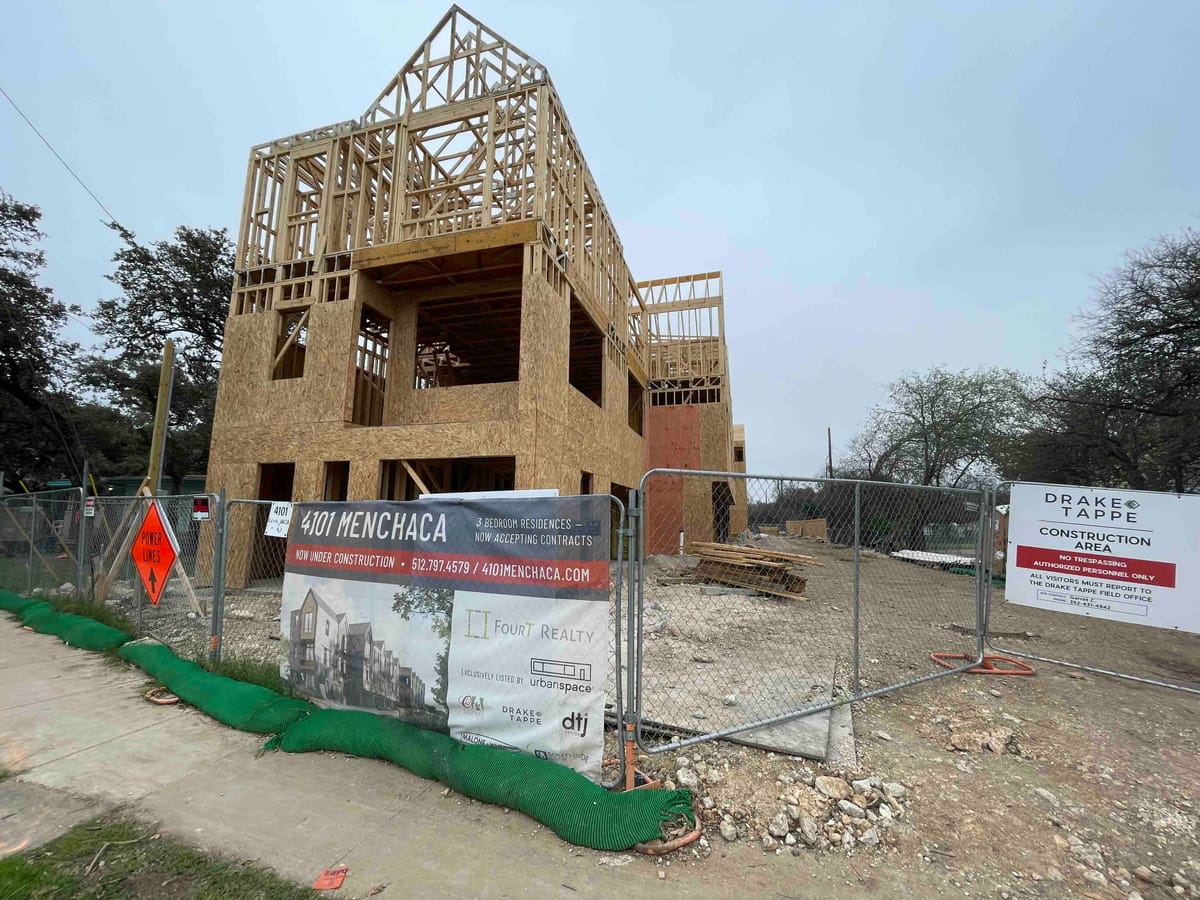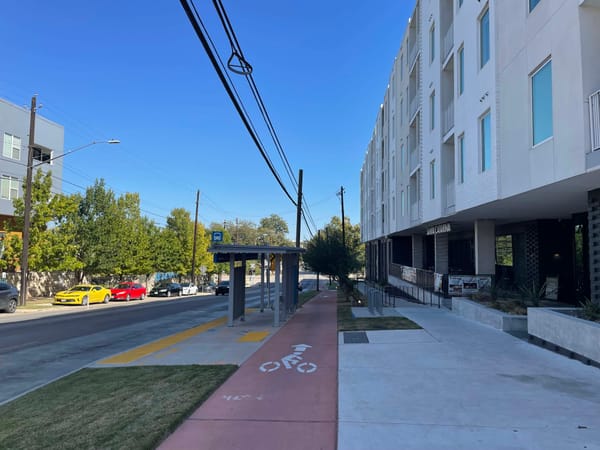HOME repairs
HOME bedeviled by bureaucracy.

In debates over land use, politicians and the public tend to focus on zoning. But zoning is only one of many roadblocks to housing. The headline-grabbing zoning reforms that allow more housing may not actually enable more housing if they aren't accompanied by reforms to Austin's byzantine technical code and the labyrinthine permitting bureaucracy that interprets it.
Alas, it's hardly surprising that homebuilders are complaining that HOME, the ordinance Council approved nearly two years ago to allow three units on single-family lots, has been severely hampered by other rules in the land development code.
Tonight (at 6 pm) the Planning Commission will take up a resolution asking city staff to review recent rules "alterations" that city departments have implemented in response to HOME.
"Most of these changes reflect staff’s earnest efforts on this matter, while some far exceeded their mandate," reads the resolution. "But each department, almost without exception, generated new criteria that added new requirements, raised costs or contradicted other regulations, the net effect of which is to reduce the ability of HOME to produce residential-scale housing, especially for third units."
The resolution calls for the city manager to work with the city's departments to "harmonize" the various technical codes and criteria manuals "to reduce regulatory barriers to HOME" and to "ensure that two or three units are just as easy and cost effective to build as one unit."
"Harmonizing" refers to getting all of the departments behind the same rules. This may seem obvious, but it is not uncommon for projects to receive conflicting guidance from different departments, which largely operate in silos, focused entirely on their own specialty.
Consider the issue of trees. On one hand, the city has subjected three-unit projects to commercial landscape requirements, which requires more trees to be planted. On the other hand, Austin Water only allows 50% of the site to be irrigated. And Austin Energy is now requiring that trees be planted at least 20 feet away from power lines or other utility equipment. Finally, the Transportation Department is requiring licensing agreements for any trees planted in the public right-of-way –– that grassy section between the sidewalk and the street. One builder's recent attempt to build street trees in front of a home cost him $14,000 in legal fees.
(I have heard the landscaping requirements alone are enough to push builders to opt for two units instead of three.)
Austin Water also recently decided that even an ADU will require its own water meter, which can add roughly $35,000 to the cost of construction.
Similarly, Austin Energy is now requiring any project that is replacing an existing home to pay for upgrades to the electrical infrastructure, even if the existing equipment is relatively new. That can add $6,000-$12,000 to the project cost, according to builders.
Some of these regulations apply to all residential development, while others uniquely burden "missing middle" projects that include multiple units. Whatever the case, if they are not tangibly enhancing safety or environmental protection, they are not worth keeping.
Legislating vs. Executing
In all likelihood, this resolution will be approved by the Planning Commission and some form of it will be approved by Council. But whether it leads to meaningful change depends on what city staff does with it.
Some specific directives (e.g. "Allow porches to project into the front setback") may be hard for staff to ignore. But much of the resolution depends on department heads and the city manager making reform a priority. That is far from guaranteed.
Consider this one:
Review the impact of the WUI regulations on HOME projects and consolidate and
simplify WUI reviews to reduce costs and allow for more rapid approvals and
inspections.
The Wildland Urban Interface (WUI) code, updated last year, introduced a number of new requirements to reduce wildfire risk. About half of the city is now considered in the WUI zone. One new rule that is driving builders crazy essentially prohibits any landscaping within seven feet of a house. At its most extreme interpretation, that would rule out anything except gravel or artificial turf, but a builder I spoke to said the Fire Department appears to be giving grass the OK this point.
But if the city manager simply sends this over to the Fire Department and asks them if there is anything they could do to speed up the process or reduce costs, there's a good chance they'll simply shrug it off. They're focused on fire safety. Housing costs are not their problem.
If the city manager doesn't show leadership, then it's up to City Council members to put pressure on him to act. If the Council members aren't putting pressure on him to act, then it's up to activists to put pressure on the Council members...to put pressure on the manager.
Please tell your friends to get their own subscription to the Austin Politics Newsletter! And if you found this article particularly valuable, you can show your appreciation by buying me a cup of coffee to fuel further investigation and analysis of city politics.




